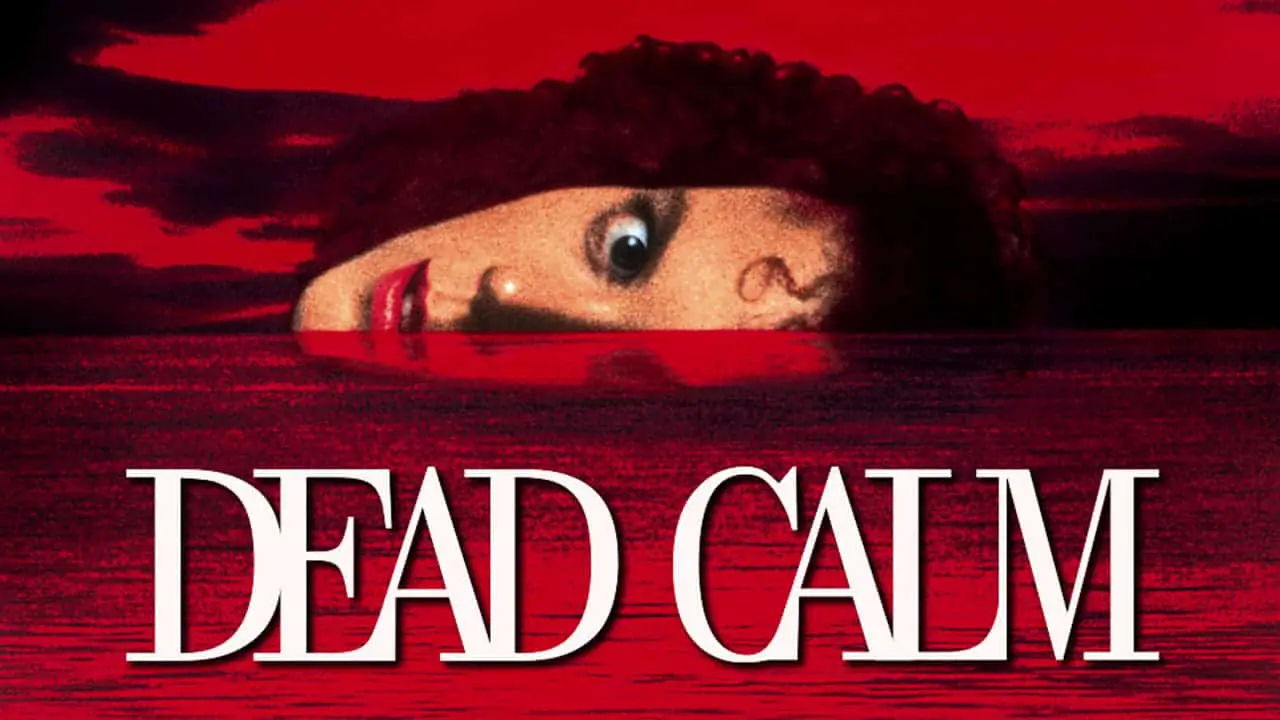Sometimes horror movies are even more terrifying when read metaphorically. In Dead Calm, the story of a husband and wife at sea with a murderous intruder is bad enough, but what if the murderer doesn’t exist?
Dead Calm is a well-executed but outdated psychological horror, adapted in 1989 for film from a 1963 novel by the same name by America Charles K. Williams (1909 – 1975).
It’s important to remember the real world setting of this story:
The 1962 Model Penal Code repeated the marital rape exemption, stating: A male who has sexual intercourse with a female not his wife is guilty of rape if: ….
from the Wikipedia article about marital rape in America
To spell it out, as Charles Williams was writing this novel, a brand new model penal code stated clearly, for husbands all over America, the author’s home country, that it was impossible to rape your wife. Wives belong to you, and you may do with their bodies exactly as you wish. Implicit in this law: It is wrong to access another woman’s body, but this is because she belongs to another man, and we don’t want to offend him.
However, I’m not sure we can blame the creepiness of this film on Charles Williams, despite him writing in the perfect milieu for a certain kind of exploitation. Apparently, the Hughie of the book is a different sort of character altogether. He is not sexually motivated at all, and therefore immune to the witch-like wiles of a good-looking young woman. The problematic rape scene in this story was inserted in the mid 1980s.
The movie adaptation of Dead Calm was filmed over two decades later, near the Whitsunday Islands in 1987. The film was directed by Australian Philip Noyce, starring NZ/Australian actors and an American villain. Dead Calm was a success in Australia and America. The New York Times named it one of the 1000 best films ever made. However, this is a film where female (or feminist) critics responded differently from male critics:
Caryn James [also] of The New York Times felt that the film was “an unsettling hybrid of escapist suspense and the kind of pure trash that depends on dead babies and murdered dogs for effect,” and that Dead Calm “becomes disturbing for all the wrong reasons.”
Wikipedia, Dead Calm
Sam Neill plays the husband. Neill was born in 1947, which made him 40 years old at time of filming. Nicole Kidman, his onscreen wife, was born in 1967, so she was 20 years old at time of filming. This is a typical age gap between male and female partners of film, but often we’re asked to believe that the woman is older than the actress in years, on the understanding that the female character simply looks younger.
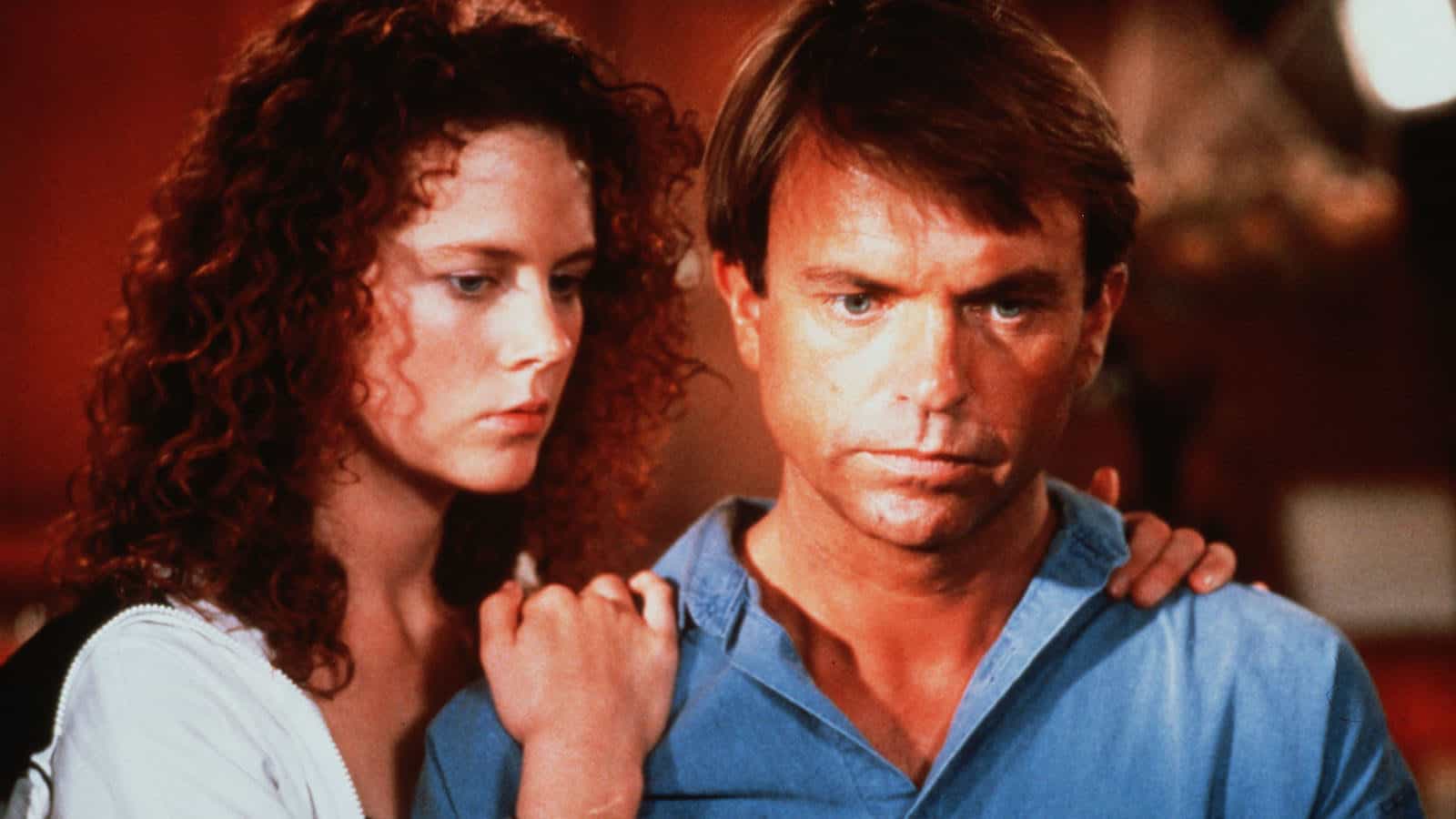
However, Dead Calm is the story of a power imbalance within marriage. So let’s take the age difference exactly as it appears. Let’s imagine a man in his mid-thirties took a woman in her mid teens and immediately impregnated her. At 20 years of age, the character Rae is already a married and bereft mother of a dead child who at time of death was old enough to sing nursery rhymes and take off his own seatbelt.
STORY STRUCTURE OF DEAD CALM
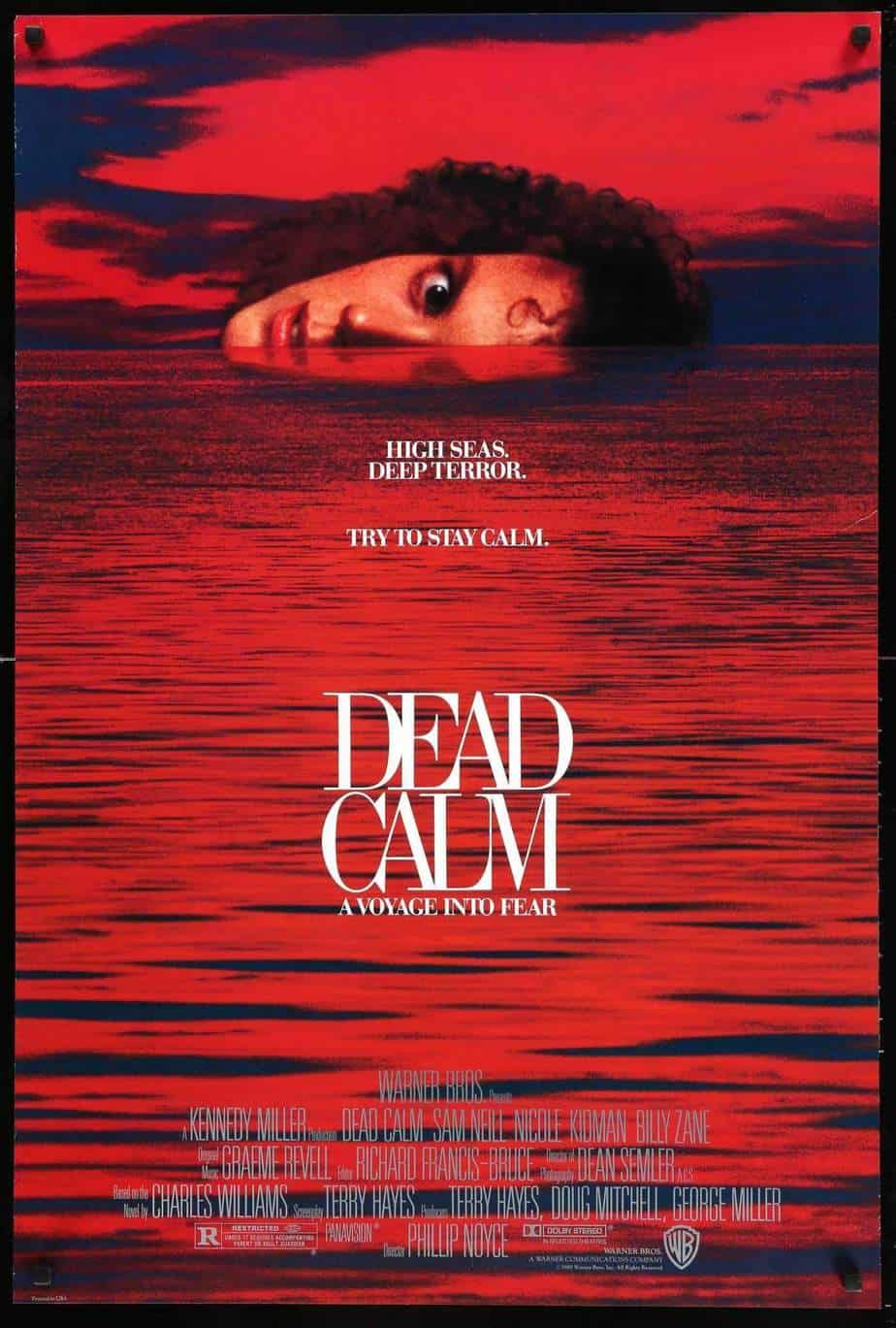
PARATEXT
LOGLINE
After a tragedy, John Ingram and his wife Rae are spending some time isolated at sea, when they come across a stranger who has abandoned a sinking ship.
We must watch the film to find out the nature of the inciting tragedy, but if you’ve seen enough movies you can probably guess what her ghost is; Rae is depressed after losing her son (in a car accident).
TAGLINE
High seas. Deep terror. Try to stay calm.
The tagline clues us into the main idea: We are to consider the literal meaning of ‘calm waters’ against the metaphorical meaning of ‘calm mind’. Calm waters save a seafarer and so does remaining calm under extreme pressure.
SHORTCOMING
Rae is basically a child at the start of the movie, in a milieu where ‘women-and-children’ may as well be one word. She has married a much older, more capable man. But most of all, she is in the throes of grief after losing her son in an accident in which she was at the wheel.
In reality, this is something she would never leave behind. Rae’s character arc does not aim for psychological mimesis, except perhaps in the idea that there are very good times and very bad times in the wake of major loss.
DESIRE
Rae has been taken on a boating holiday by her husband who is trying to help her with grief. Rae is fairly passive in this trip, and only kicks into action when she is forced to fight for her life.
OPPONENT
Hughie is a Minotaur opponent with no humanity. He’s not very interesting, though his main ‘interest’ comes from the juxtaposition between evil and seduction. In some ways the director and writer turned him into a masculine version of the evil female witch. It’s possible he even deliberately poisoned his shipmates with botulism, and poisoning is a historically female tool within narrative.
As I keep saying, (gender) inversion does not equal subversion of problematic tropes.
PLAN
At first Rae plans to appease Hughie, and tries to win him over by being friendly. Hughie sees through this and calls her out on it. (You can’t play a witch’s trick on a witch.)
Rae changes her plan and decides to knock him out by offering him a lemonade laced with sleeping pills or similar. Rae is on medication for depression. As Betty Friedan famously exposed in The Feminine Mystique, medicated women were a reality as well as a fictional trope of the 1960s. The idea of women as poisoners goes way back in history, and remains one of a female character’s main weapons in the fight against a big, strong male threat.
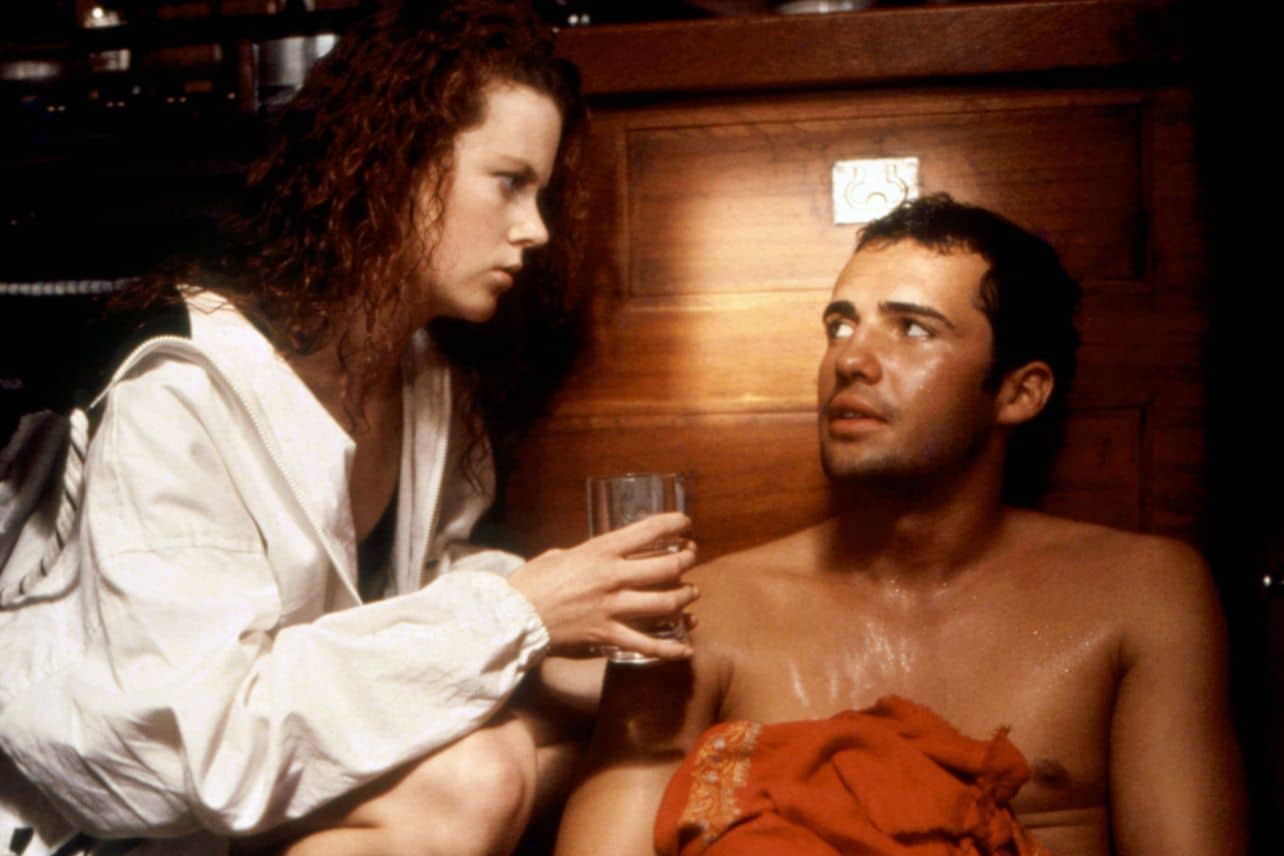
Next Rae decides to seduce him. The audience knows that she is fighting for her life, making this unambiguous rape by today’s standards, but unfortunately not by 20th century standards, in which Rae is using sex in a transactional way (I’ll give you access to my body; you grant me the right to live). This transaction was set down in law. Criminalisation of marital rape began in Australia with the state of New South Wales in 1981, followed by all other states from 1985 to 1992. This Australian film was made right in that period where men in some states were still granted full access to women’s bodies, so long as that woman was married to him. The book Dead Calm is much older and marital rape in 1963 was a foreign concept for the vast majority of people.
This real world situation explains why watching Rae carry out her plan to entrap Hughie Warriner with her (performative) sexuality evokes a cringe response in me. Another part of my cringe response comes down to the camerawork.
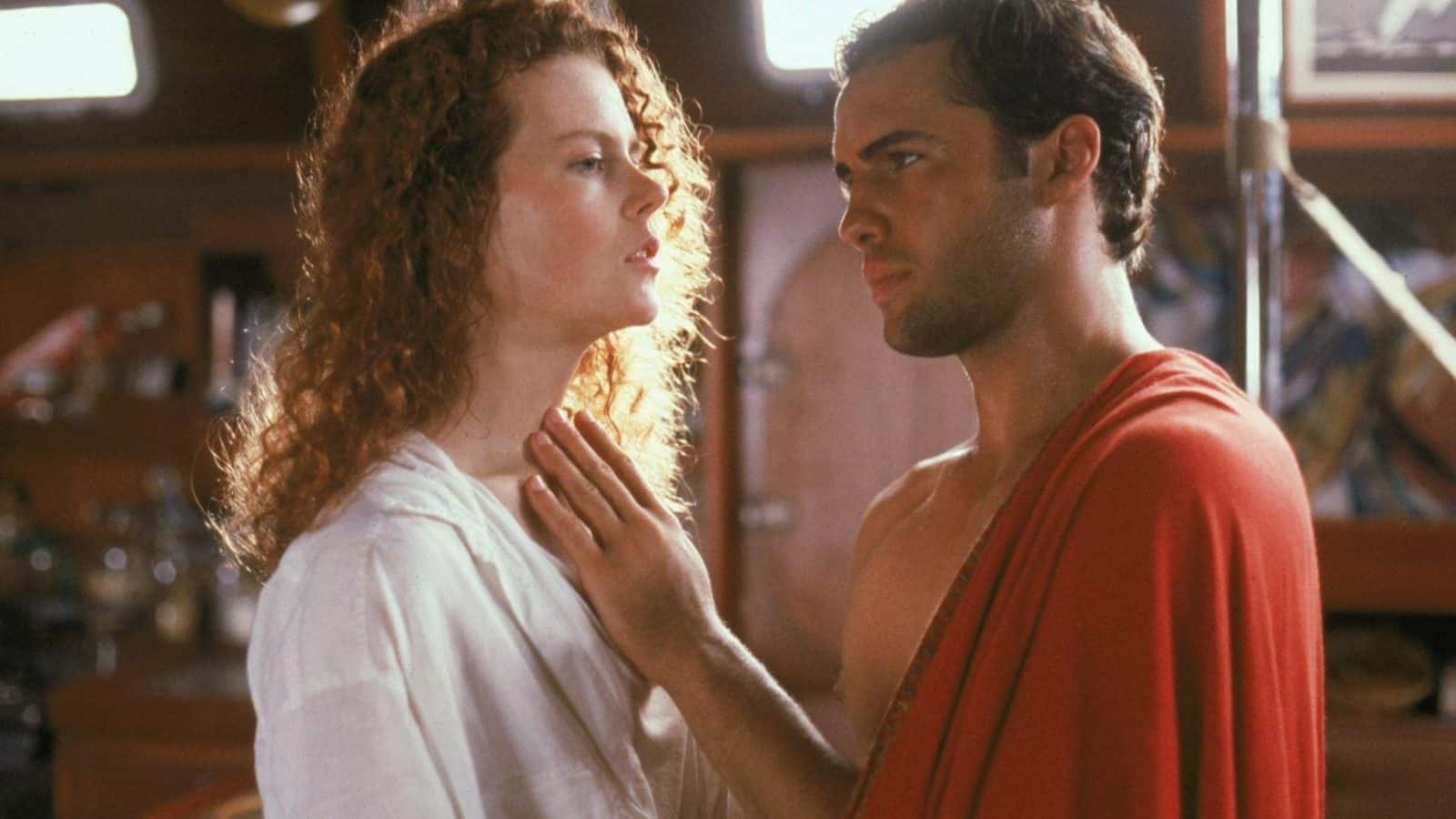
Inappropriately sexualised gaze on screen is hardly a mark of the 1980s because it still happens today. All too often, as a female character endures sexual assault, directors prefer to sexualise her body for the cishet male gaze rather than choose to bring the viewers into her fear and disgust by showing, for example, the view of the man’s chin, nostrils and slobber as he writhes around on top of her. If filmmakers wanted to evoke a disgust response, that’s how they’d do it. Instead, they go out of their way to evoke arousal, linking eroticism with violence, lessening the impact of the violence, lessening audience empathy for the victim. Instead an audience unwittingly sides with the male perpetrator on screen: We see her as the perpetrator sees her.
Especially troubling is the deliberate ambiguity of Rae’s desire. This ambiguity is a source of disagreement on WikiChat:
“After having sex, Rae is staring downward, feeling guilty for betraying her husband, by allowing Hughie to please her, including having an orgasm.” What the fuck? Where did that come from?
24.23.5.28 (talk)
I’m not sure who creeps me out more, Hughie, or Rae for having slept with him. VanishingUser 03:02, 28 March 2007 (UTC)
Rae in my opinion. It’s one thing if Hughie is interested in having sex with her. It’s another when Rae willingly and seductively goes along with it.
WikiChat Dead Calm
And here is an archived chat from 1993 between someone who believed Rae was enjoying herself, and someone who argued she was using one of the few tools in her female trickster toolbox in order to save her husband. Another user points out that she was trying to save herself first so that she could then save her husband. What’s lacking in all of these discussions is the extent to which the filmmakers encourage us to enjoy Nicole Kidman’s body.
The #metoo movement has since opened up conversations about what consensual sex looks like, and I wonder if those chatters in 1993 might view the film differently if rewatched in 2020.
Apart from the male-gazey camerawork, what if an older, less attractive actor had been chosen in favour of Billy Zane? Age-gap partnerships can be very healthy and genuine partnerships, but not in this particular story. (Before he takes off on his fool mission to investigate the sinking boat, Sam Neill’s character speaks to Nicole Kidman’s character as if she’s a child.)
It was a deliberate choice to cast Billy Zane, very similar in age to Nicole Kidman, and not a Mick Taylor type of villain a la Wolf Creek. Age and good looks make the characters Rae and Hughie ‘natural’ sexual partners, ironic emphasis on ‘partners’. In a rape situation this juxtaposition between partnership and power constitutes a large part of the cringe factor. The message becomes this: She really wants it. She just doesn’t know it. Her desire for her assailant is repressed.
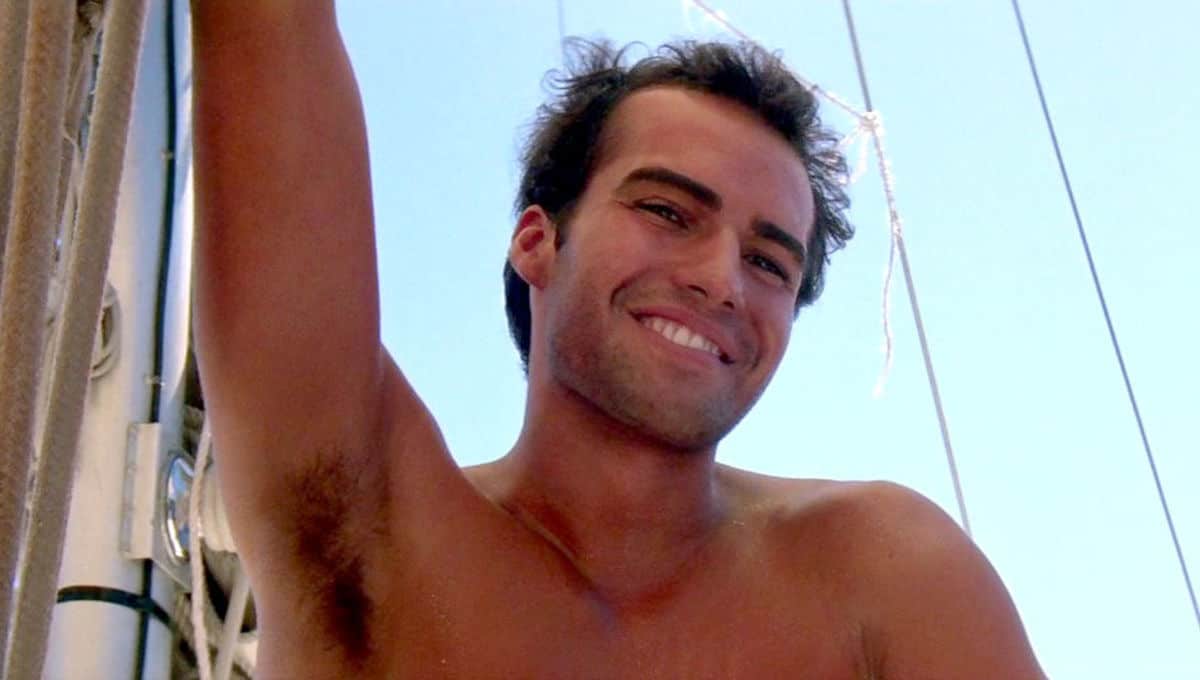
THE BIG STRUGGLE
Most of the film comprises a chase sequence, albeit in the confines of a boat. The beats and timing of the coming together versus fighting are a little too similar the beats in a romantic movie, in fact.
ANAGNORISIS
This is Rae’s character arc, and I suspect we are therefore meant to regard this as a story about female empowerment. Her older husband is the boat expert (he is in the navy) and without him she must work out how to evade an attacker, find a way around faulty communication equipment, and navigate herself back to the husband’s sinking ship.
NEW SITUATION
A number of critics faulted the film’s ending as being over-the-top, with the Post‘s Howe writing, “… while it’s afloat, ‘Dead Calm’ is a majestic horror cruise. … For much of the movie, you’re enthralled. By the end, you’re laughing.”
Wikipedia, Dead Calm
I can tell you exactly why the ending is laughable: The mechanical character who just won’t quit is a commonality between horror and comedy. Those horror tropes shared equally by comedy are especially hard to get right.
The metaphorical ending is far more harrowing. Once Hughie is back on the boat, he takes over John’s role shampooing her hair. (Any PTSD is completely erased — she is now presented as living the dream life, not only free from recent trauma, but free of grief for her dead toddler as well.) Rae doesn’t realise at first that her husband has been swapped out for this bad guy. I believe this is a strong clue, meant by the filmmakers or not, that Hughie is the angry dark side of John in a Jekyll and Hyde plot. This is a husband who can turn on a dime. It’s Rae who’s supposed to be the struggling one, sad and on medications for that. But a more typical outworking of masculine grief is anger, because sadness is not permitted in manly men.
EXTRAPOLATED ENDING
It took a number of viewings to think of Dead Calm in this completely allegorical way, but to me the monster represents aspects of Rae and John’s unequal marriage, and the dark side of grief in the wake of losing a child.
Hughie must be a figment of Rae’s drug-addled mind, representing the bifurcated way in which she sees her own husband.
Nicole Kidman found herself in a surprisingly similar role much later in Big Little Lies, in which she loves her husband, finds him attractive, and is also terrified of him. The boat setting is a metaphor for the isolated suburban house. This boat looks on the inside like a house, and I remember commenting while watching that things aren’t even locked down on the boat, subject to being tipped over with the slightest wave turbulence.
The similarity between the suburban house and the boat is clear: A woman is all alone with a violent sexual partner. No one is coming to save her. She must find her own way to coexist with him. This is the real situation for many victims of domestic violence, who live among us in the suburbs, maybe right next door. Yet they might as well be in the middle of the ocean.
RESONANCE
On the one hand, Dead Calm is a product of the mid 1980s. It sits uncomfortably at an intersection between nascent ‘girl power’ and the patriarchy pushing back on increasing women’s rights (notably the right not to be raped by one’s husband). The image of Rae learning how to troubleshoot technical equipment on a boat then overcoming a baddie before literally taking the wheel is a perfect visual depiction of the 1980s New Woman.
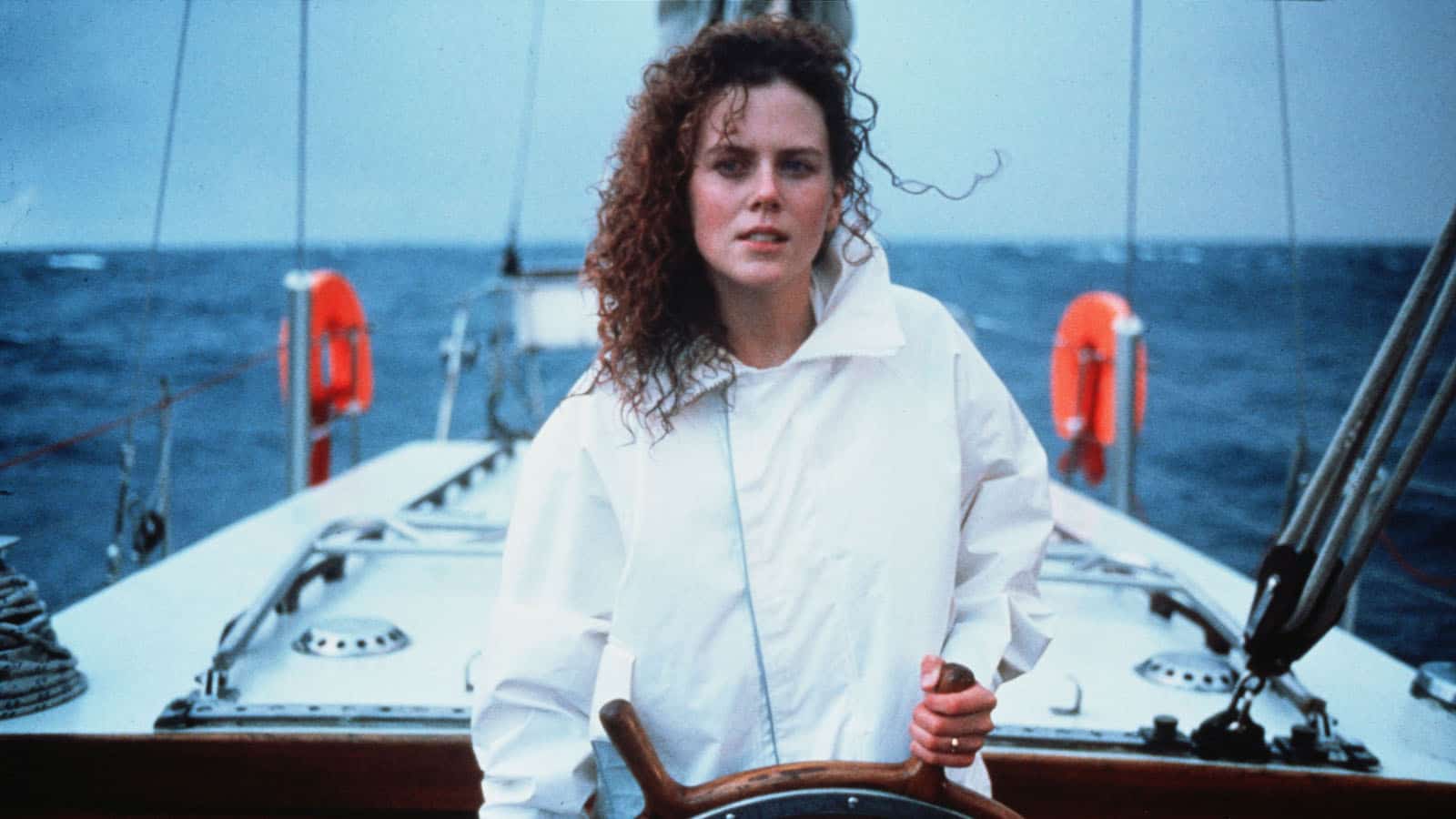
On the other hand, I think of this film when I watch certain newer ‘feminist’ shows, which are too often about so-called ‘strong female characters’ who at some point use their sexuality to survive within their own microcosms.
But the worlds remain unchanged — unmistakably masculine domains. Women are told that we each must fight our own battles, mostly without help, without asking for society to step in, because how dare we even expect that. By single-handedly defeating the worst, most destructive representation of masculine violence, Rae reclaims a modicum of power, but we never do see her make it off that boat.
